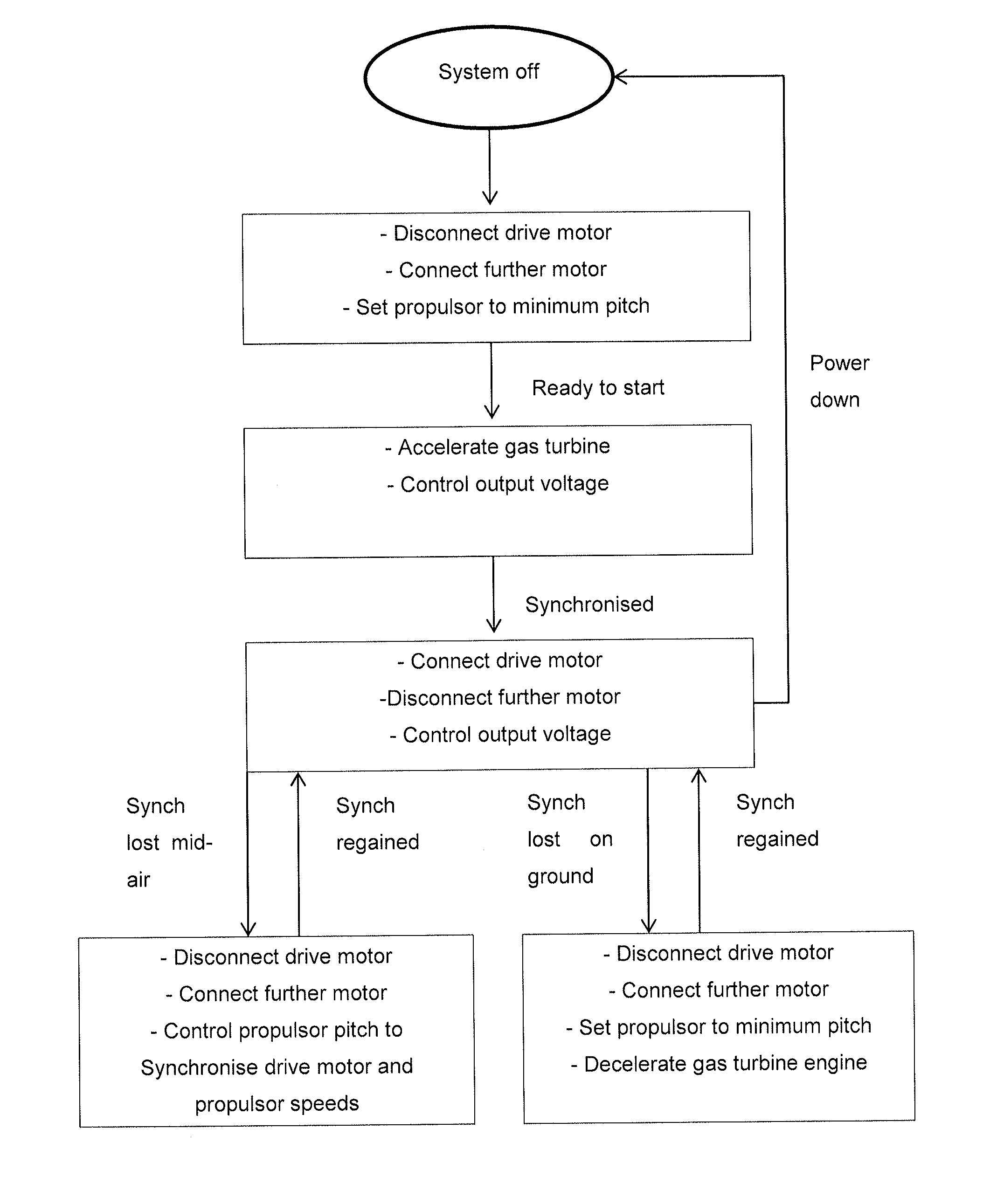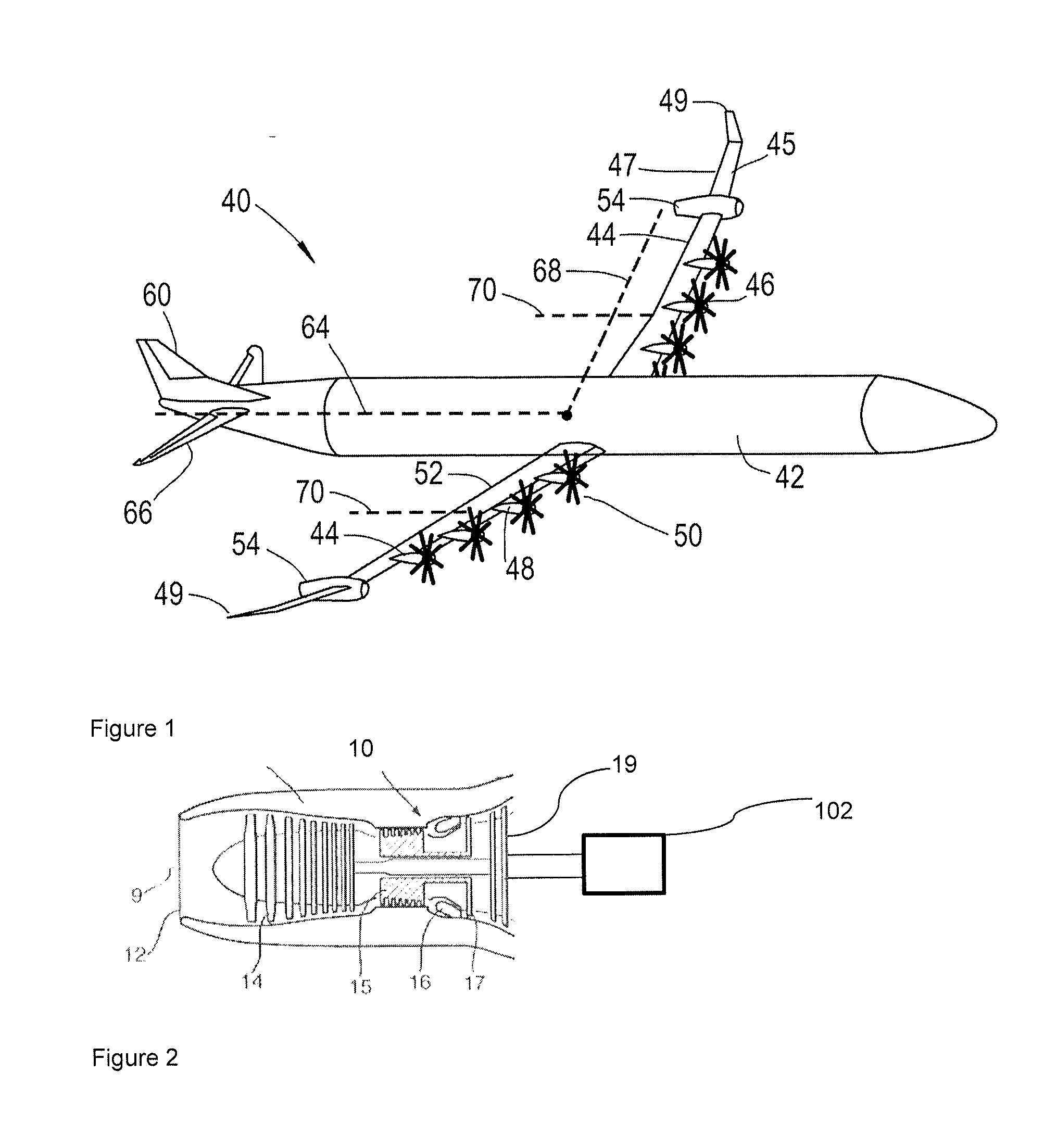Aircraft electrical network
a technology for electrical networks and aircraft, applied in propellers, power electronics devices and motors, power transmission types, etc., can solve problems such as inefficiencies in electrical networks, negating these advantages, and power losses in electrical transmission, so as to reduce electrical load, reduce electrical load, and reduce current drawn
- Summary
- Abstract
- Description
- Claims
- Application Information
AI Technical Summary
Benefits of technology
Problems solved by technology
Method used
Image
Examples
Embodiment Construction
[0032]Referring to FIG. 1, a first aircraft 40 is shown. The aircraft comprises a fuselage 42, a pair of wings 44 extending therefrom generally normal to the fuselage 42, and an empennage located at an aft end of the fuselage 42. The empennage comprises vertical and horizontal tailplanes 60, 66.
[0033]A wingspan is defined by the distance between wing tips 49. Each wing 44 comprises a leading edge 45 and a trailing edge 47, which together define a chord extending therebetween. The ratio between the wingspan and chord length defines an aspect ratio. As can be seen from FIG. 1, the chord length varies along the wing span, from a relatively large chord at the wing root adjacent the fuselage 42, to a relatively small length at the wing tips 49. In cases such as this where the chord varies along the span, the aspect ratio AR can be defined as the square of the wingspan b divided by the area S of the wing planform:
AR=b2S
[0034]In the example shown in FIG. 1, the aspect ratio is approximatel...
PUM
 Login to View More
Login to View More Abstract
Description
Claims
Application Information
 Login to View More
Login to View More - R&D
- Intellectual Property
- Life Sciences
- Materials
- Tech Scout
- Unparalleled Data Quality
- Higher Quality Content
- 60% Fewer Hallucinations
Browse by: Latest US Patents, China's latest patents, Technical Efficacy Thesaurus, Application Domain, Technology Topic, Popular Technical Reports.
© 2025 PatSnap. All rights reserved.Legal|Privacy policy|Modern Slavery Act Transparency Statement|Sitemap|About US| Contact US: help@patsnap.com



